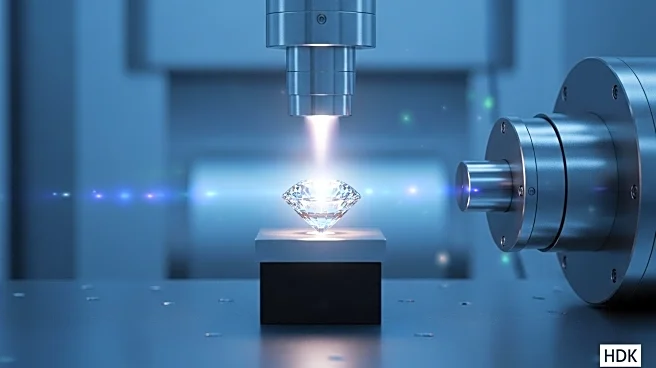What is the story about?
What's Happening?
Researchers at the University of Tokyo have developed a novel method to synthesize diamonds using an electron beam, marking a significant advancement in material science. By preparing samples of adamantane, a carbon cage molecule, and exposing them to electron irradiation, the team successfully formed nanodiamonds. This method not only supports diamond formation but also protects organic materials from damage typically caused by electron beams.
Why It's Important?
This breakthrough in diamond synthesis could revolutionize fields that rely on electron beams, such as imaging and analysis. The ability to create diamonds at lower pressures and temperatures opens new possibilities for material science, potentially leading to advancements in electronics, quantum computing, and other technologies. The research also provides insights into the natural formation of diamonds in extraterrestrial environments.
Beyond the Headlines
The study highlights the potential for electron beams to facilitate controlled chemical reactions, challenging the traditional view that they primarily cause damage to organic molecules. This could lead to new applications in synthetic chemistry and material engineering, expanding the capabilities of current technologies.
AI Generated Content
Do you find this article useful?













